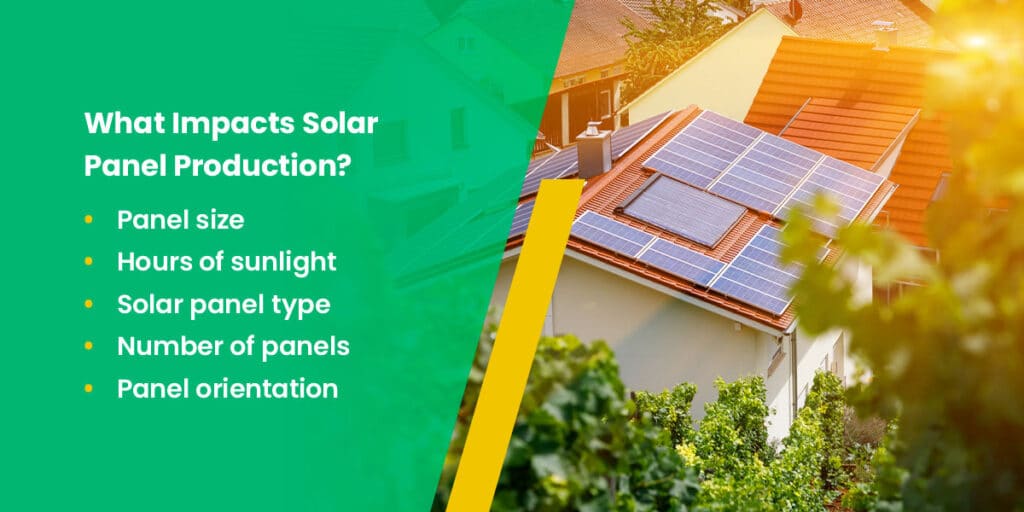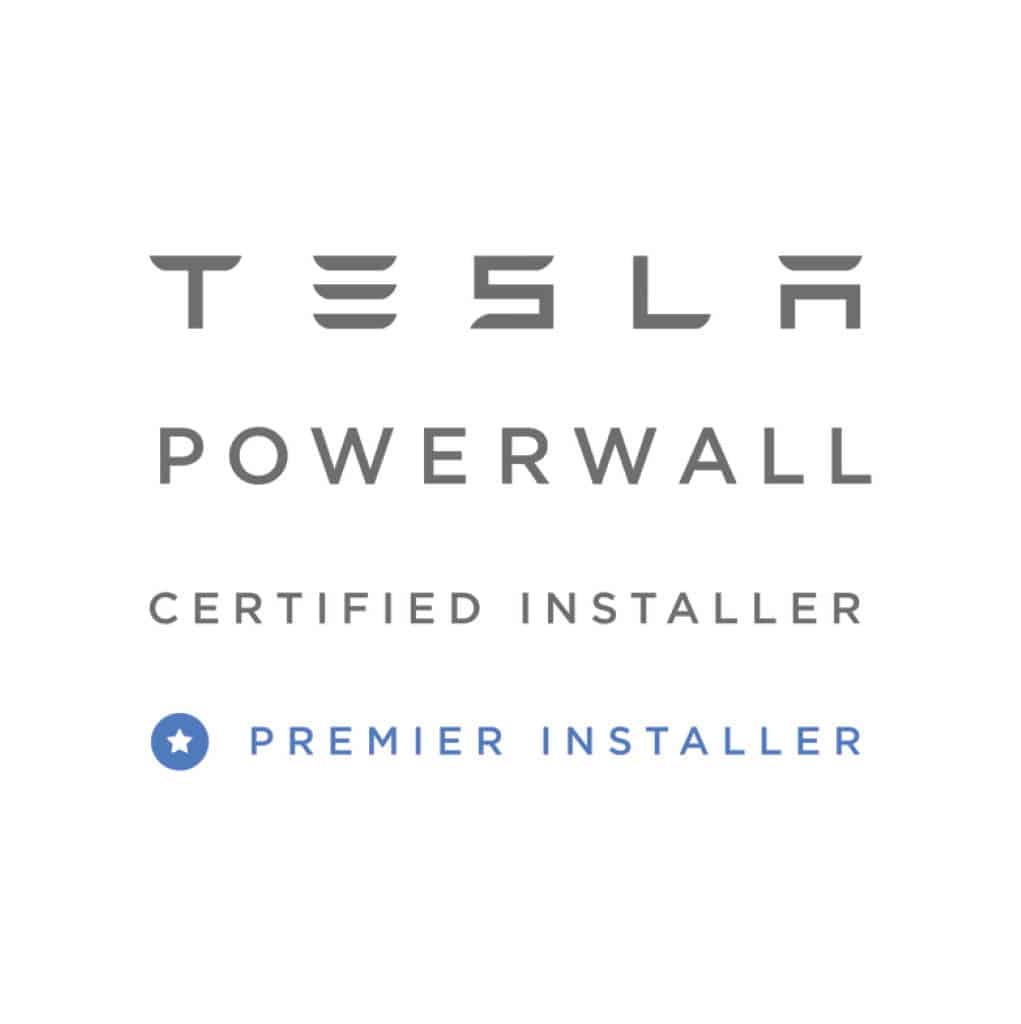
With rising electricity costs, many homeowners and businesses are turning to solar panels to help reduce energy bills. Solar panels are an effective way to generate power and lessen your reliance on energy from utility companies. In some cases, you may even be able to sell your excess energy to utility companies for additional cost savings.
Before investing in a solar system, you need to know how much energy solar panels can produce. Various factors influence solar panels’ energy production, including how much sun they get daily.
How Much Energy Do Solar Panels Produce?
Solar panels generate energy measured in kilowatt-hours. On average, a solar panel produces between 250 and 400 watts of energy every hour. One solar panel can generate up to 2 kWh in a day. A 10 kW solar panel system can produce 12,000 to 14,000 kWh a year. The amount of energy a solar panel system can generate will differ depending on the manufacturer, the type of solar panel and the installation size.
Usually, the power a solar panel can produce will be next to the panel’s name in a quote. For example, a Solaria PowerX™ 400W panel produces 400 watts of power. Remember, solar panel manufacturers measure the output in ideal environments, with intense, direct sun and no obstructions. Your solar power energy output may be lower than stated, depending on where and how you set yours up.
How to Calculate Solar Panel Output
Calculating how much energy your solar panels produce can help you track your energy production and usage. It is relatively easy to determine how much energy your solar power will produce. The formula is as follows:
- Panel power in watts x peak sun hours = daily kWh
If you have a 400-watt solar panel that receives five hours of direct sun a day, you can calculate their total output as follows:
- 400 watts x 5 hours = 2,000 watt-hours or 2 kWh
To determine how much energy your system produces in a month or year, multiply the daily average by the number of days in the month or year. For example, a 400-watt solar panel receiving five hours of direct sun a day will give you roughly 2 kWh every day. Multiply this by 365 days in a year, and you’ll find a panel that produces 2 kWh a day can generate 730 kWh a year. The more panels you install, the more power you can generate.
According to the U.S. Energy Information Administration, the average household uses 10,632 kWh of electricity annually. Based on the formula, the average household would need between 15 to 24 solar panels to meet their electricity needs for the year. Remember that the actual output of solar panels will differ slightly from these calculations based on UV ray intensity and the hours of sun received. Each panel’s wattage is an estimate based on ideal circumstances, so yours may produce less than stated, even on long, sunny days.

What Impacts Solar Panel Production?
Every solar panel installation will generate different amounts of power. Several factors impact solar panel generation, including the following.
- Panel size: Solar panels usually have either 60 or 72 cells. Larger panels with 72 cells can generally generate more electricity.
- Hours of sunlight: The more intense sunlight panels receive, the more electricity they produce. On overcast days or during winter, solar panels produce less electricity, as there are fewer hours of sunlight. The sunlight is also less intense than during the summer months.
- Solar panel type: There are three primary types of solar panels — monocrystalline, polycrystalline and thin-film. Each has varying efficiency levels, which is how much energy the panels can produce from the sunlight they receive. Monocrystalline solar panels are typically the most efficient and can reach over 20% efficiency.
- Number of panels: The bigger your solar installation, the more power you generate. The size of your solar array will depend on how much space you have for panels.
- Panel orientation: Set up your solar panels to get as much direct sun as possible. Avoiding obstructions like shade from trees, other buildings or rooftop installations can help increase solar panel efficiency.
What Happens if My Home Produces More Electricity Than I Need?
Solar panels can sometimes produce more electricity than your home or business needs. If this happens, you can take advantage of this additional power in two ways. You can store the surplus electricity in battery banks or send it to the local power grid for credit, also known as net metering. Here is how these two solutions work.
Energy Storage Systems
The first thing you should consider is setting up battery storage. A household battery can store any surplus electricity, which you can use on days when your panels produce less power than usual. Some solar power systems come with a few batteries. You can also buy additional batteries to meet your electricity needs. There are three benefits of storing solar energy.
- Covers gaps in power production: On days when there is less sunlight, excess energy stored in the batteries can supplement the limited energy produced. The batteries also ensure you have electricity at night or during a power outage.
- Reduces energy costs: The more you can use solar power, the less you rely on power from the energy grid. Over time, this can help you drastically reduce your energy bills.
- Balances electrical loads: Without batteries, you must immediately use the electricity generated by solar panels, or it goes to waste. The ability to store electricity during low-demand periods and use it during high-demand times balances your electrical load between use and production.
Net Metering
Net metering allows utility customers to offset their energy usage by generating power. Utility companies only charge for the electricity used and generally issue credits if customers can send energy to the power grid. Thirty–eight states have net metering policies and initiatives in place, including North Carolina. Net metering can be an excellent way to reduce your energy bill.
The amount of credit you earn depends on your state, but most programs use a one-for-one credit system. If you give 1 kWh of electricity to the grid, you get 1 kWh in credit. The more electricity you send to the grid, the more credits you earn. If your utility company adjusts its rates on peak and off-peak hours, you get credits based on when you send electricity to the grid, receiving off-peak credits if you send electricity to the grid during off-peak hours.
If you use batteries, utilities may restrict how much energy you can send to the grid. The batteries may need to be full before you can give any electricity to the grid. Any power you send may also have to come directly from the solar panels rather than the batteries. Check with your utility provider when setting up a net metering account.

Contact 8MSolar for a Quote on a New Solar Panel System Today!
We are certified and qualified solar panel installers with an unlimited electrical license, Solar NABCEP certification and an NC MBE, among others. Our experienced team has been installing solar panels since 2015. Countless homeowners, businesses and nonprofit organizations have trusted us with their installation.
Contact our team for a quote on a new solar panel system today!









